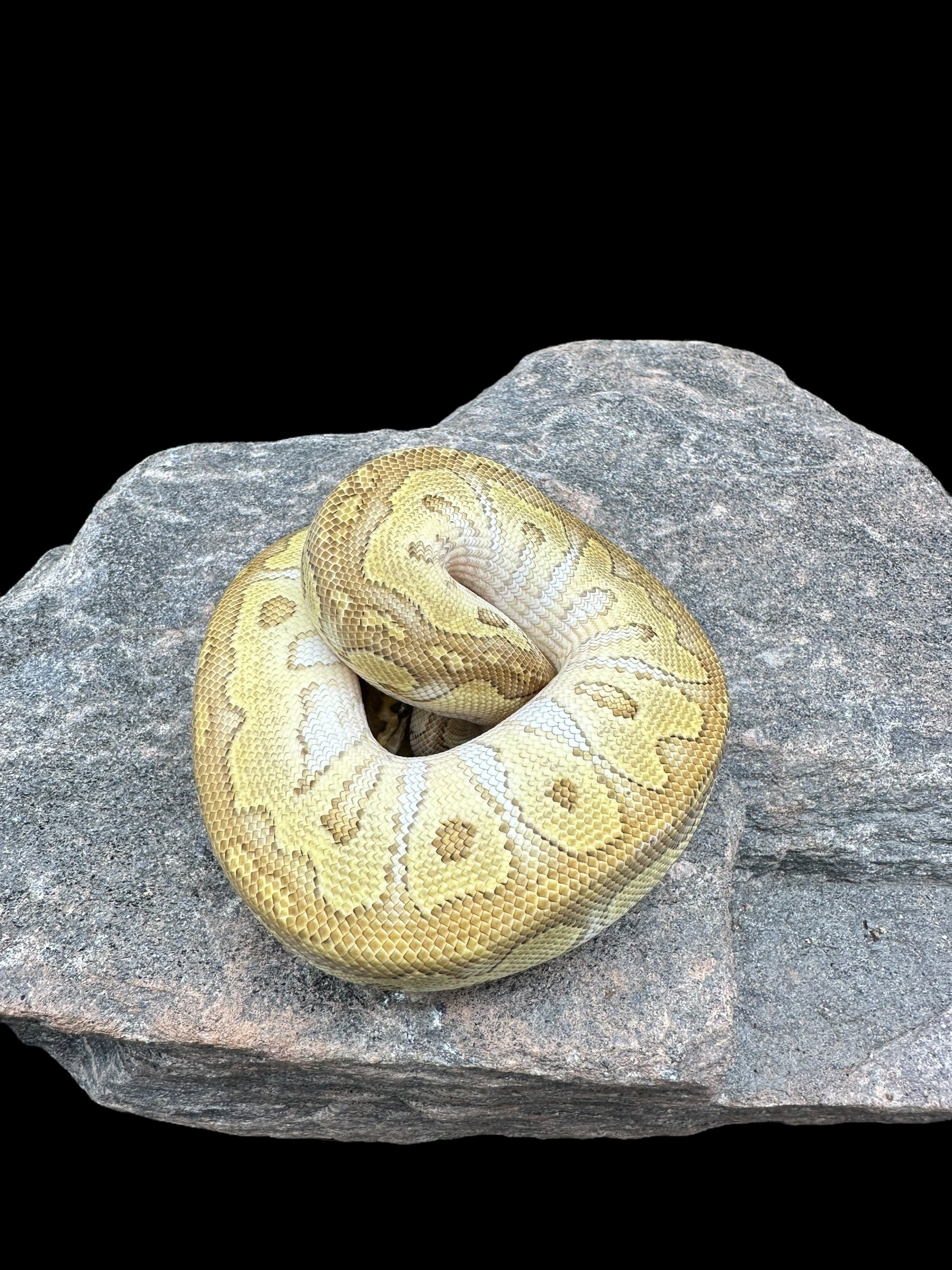Photo Disclaimer
Description
Ball Python (Lesser Clown)
Python regius
Common Names: Ball Python, Royal Python, Lesser Clown Ball Python
Species Overview
-
Size: Adults usually grow 3–5 feet (0.9–1.5 m), with females typically being larger and heavier-bodied than males. Some females may reach up to 6 feet.
-
Appearance:
-
Lesser (co-dominant, also called Lesser Platinum): Lightens overall colouration, often producing caramel-brown tones with a clean, reduced pattern.
-
Clown (recessive): Creates a bold, reduced dorsal pattern, a clean headstamp, and unique side patterning.
-
In combination, the Lesser Clown has a softer, more muted background colour with high-contrast striping and reduced side markings, creating a striking yet clean designer morph.
-
-
Distribution: Wild-type ball pythons originate from West and Central Africa, inhabiting savannahs, scrublands, and agricultural areas.
-
Habitat: Terrestrial and burrow-dwelling, ball pythons often use rodent burrows for security and stable humidity.
-
Behaviour: A nocturnal ambush predator, feeding on small mammals and birds.
Captive Care
-
Enclosure: A 40-gallon breeder (36” × 18” × 18”) or equivalent is suitable for most adults. Provide two hides (warm and cool side), climbing décor, and a water dish large enough for soaking.
-
Temperature & Humidity: Maintain a daytime gradient of 78–82°F (25–28°C) with a basking area of 88–92°F (31–33°C). Nighttime drops to 72–75°F (22–24°C) are acceptable. Keep humidity at 50–60%, with slightly higher levels during shedding.
-
Diet: Juveniles thrive on hopper mice or rat pups every 5–7 days; adults generally eat medium rats every 10–14 days. Match prey size to the snake’s girth.
-
Behaviour in Captivity: Ball pythons, including Lesser Clowns, are widely appreciated for their calm and manageable nature, making them excellent for keepers of all experience levels.
-
Special Considerations: While genetics alter appearance and breeding potential, husbandry is identical across all ball pythons.
Genetics Note
-
Lesser (Co-Dominant): Lightens colouration and reduces pattern. Two copies (Super Lesser, also called Blue Eyed Leucistic) produce an all-white snake with blue eyes.
-
Clown (Recessive): Produces bold striping, reduced side patterns, and distinctive head markings.
-
Lesser Clown: A visually expressed double-gene morph that combines the clean, lightened tones of Lesser with the bold pattern reduction of Clown.
The Lesser Clown Ball Python is a visually appealing and genetically versatile designer morph, serving as both a showpiece and a strong foundation for advanced Clown-based projects.

